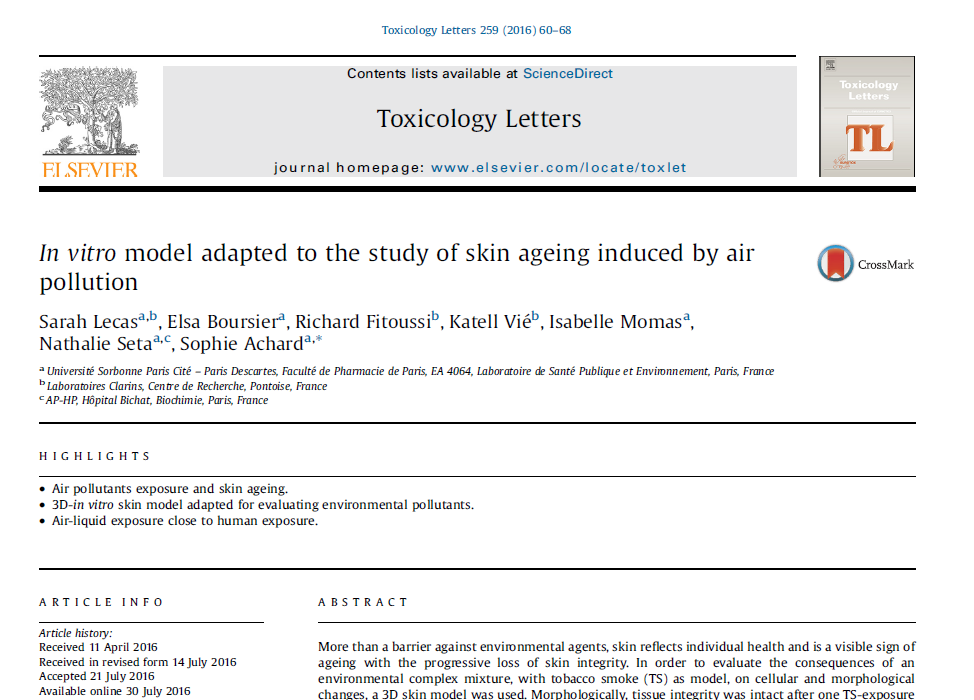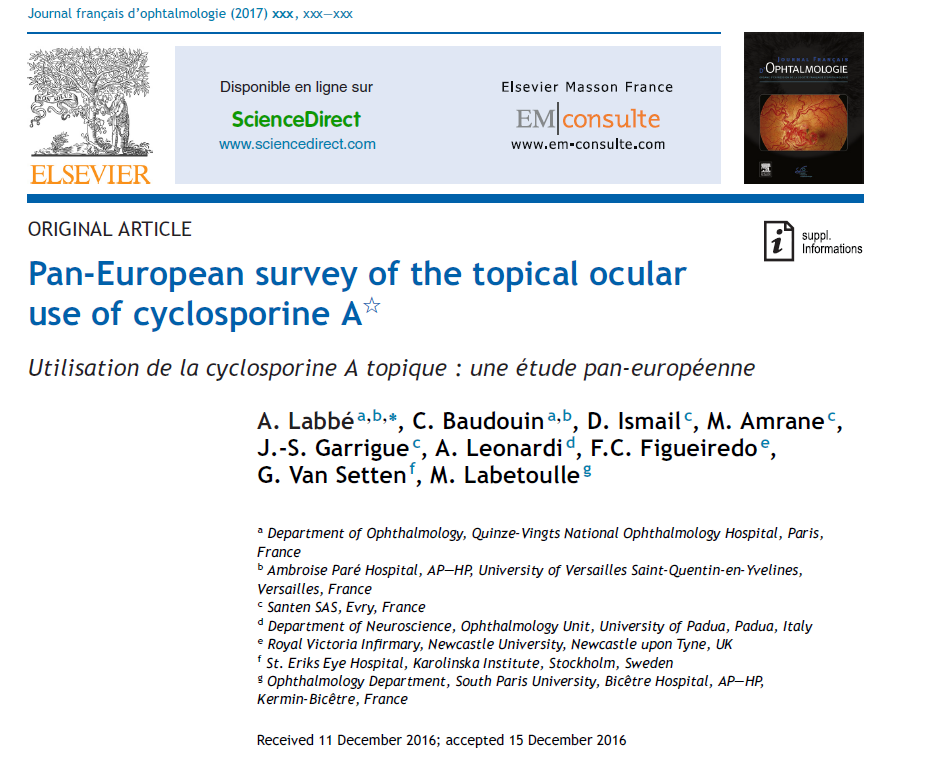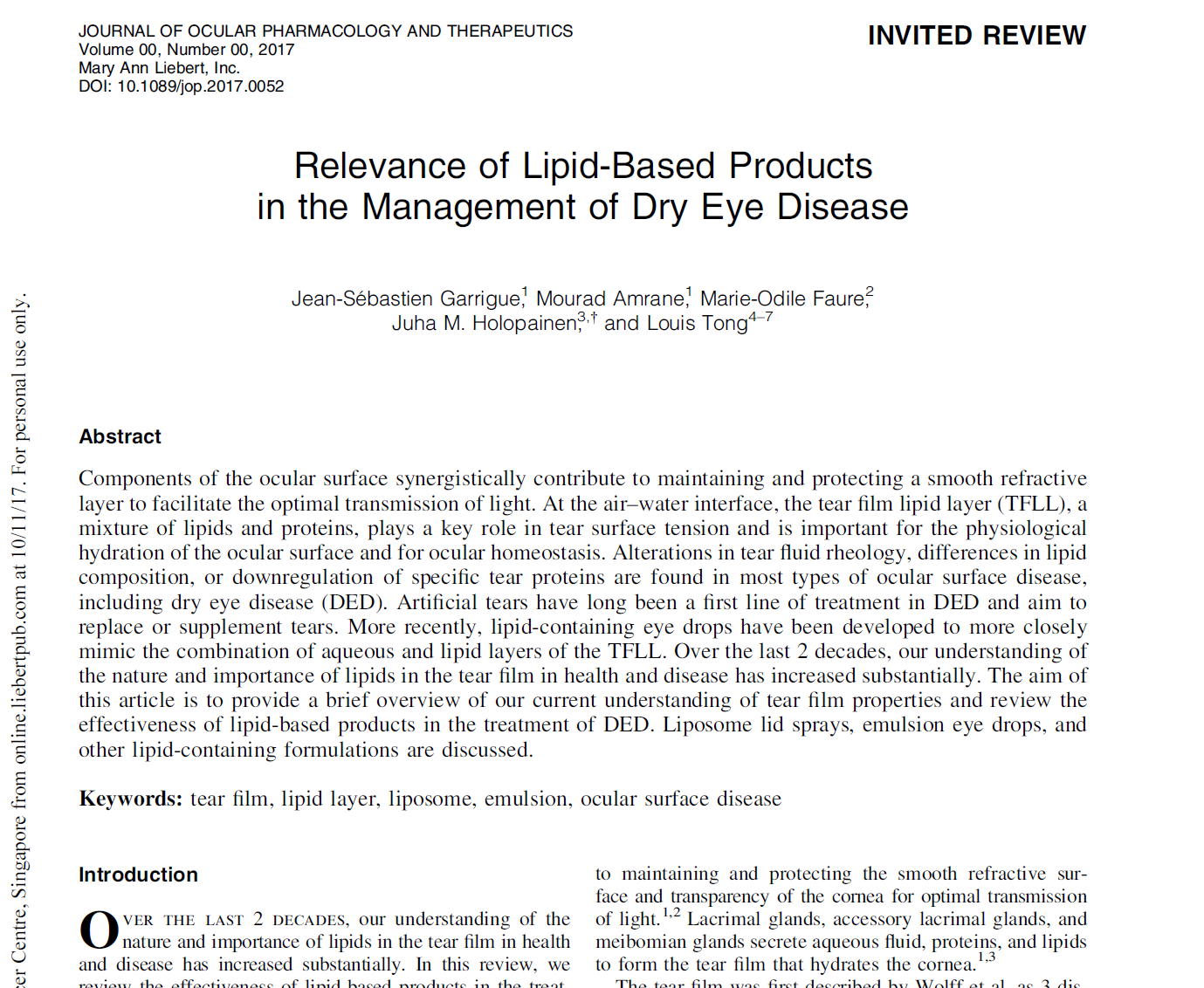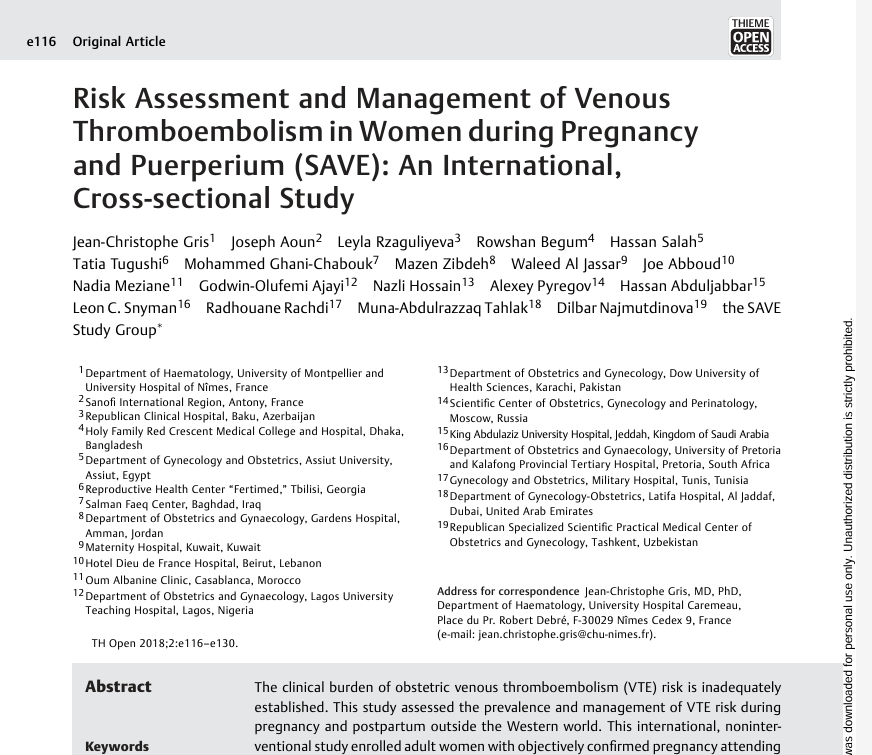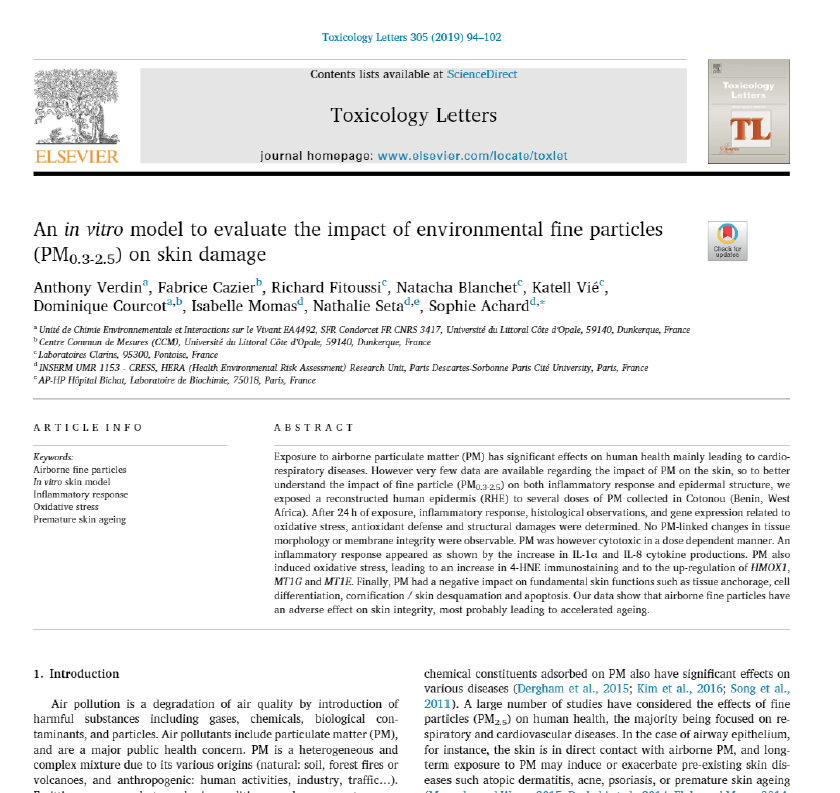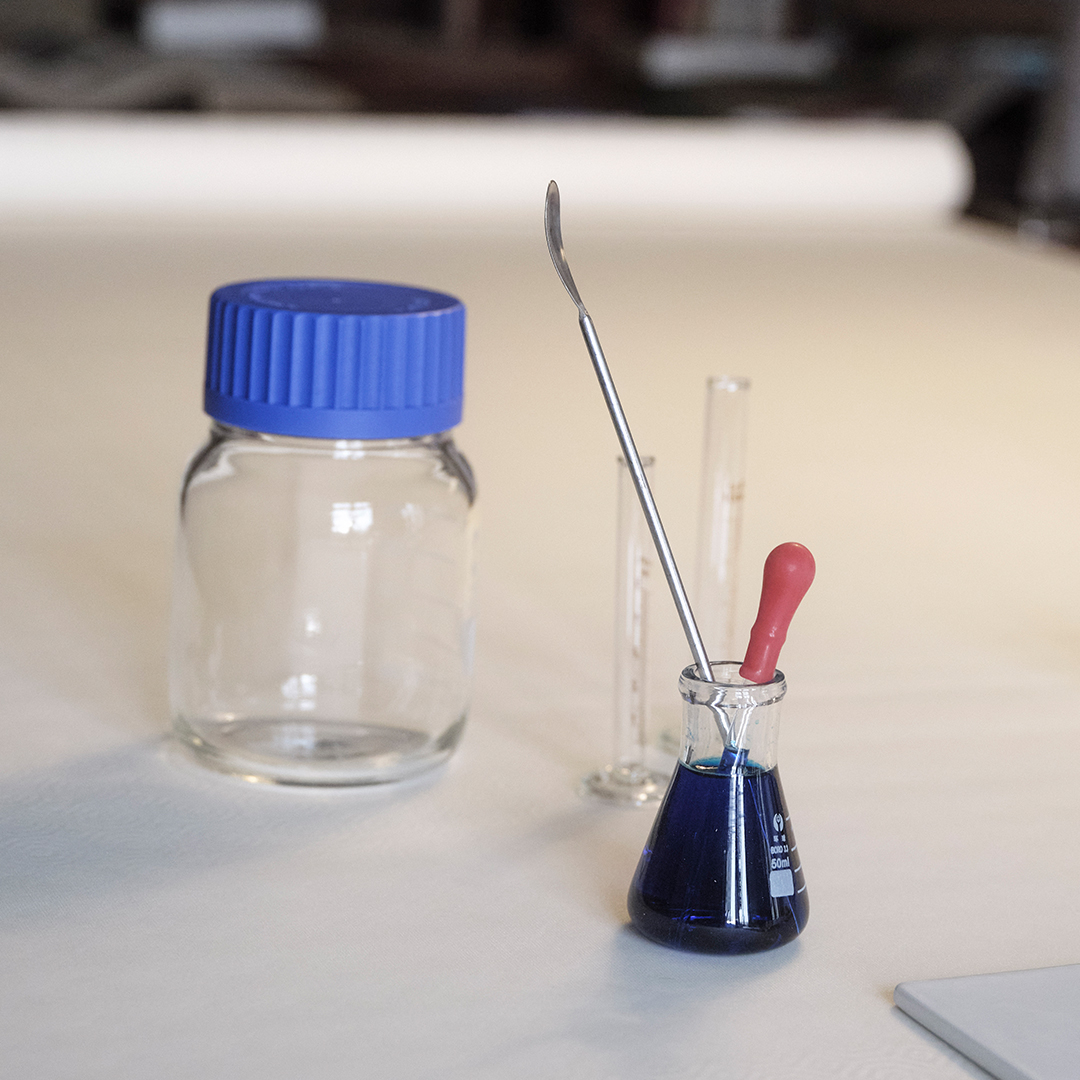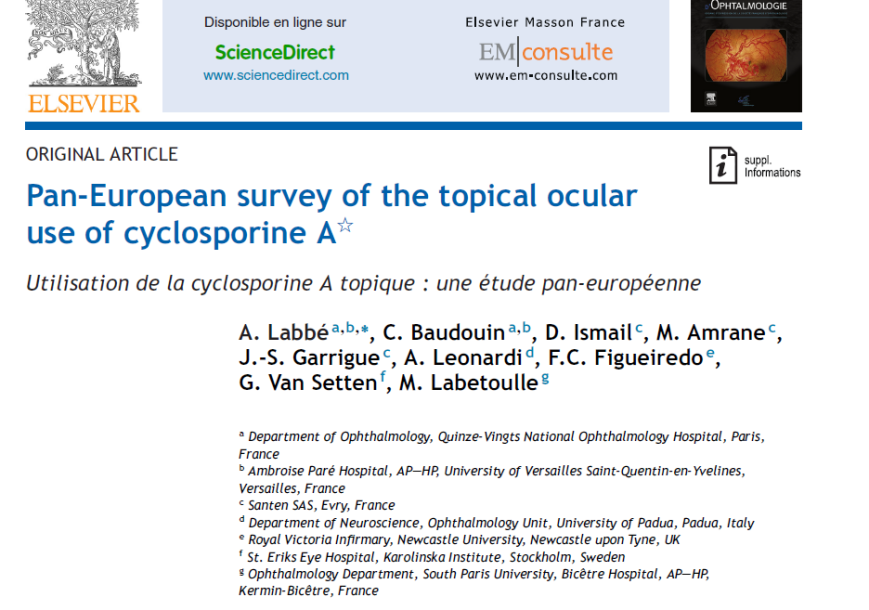
Pan-European survey of the topical ocular use of cyclosporine A
-
DATE
2017 -
Type
Journal français d'ophtalmologie -
Auteurs
Labbe A, Baudouin C, Ismail D, Amrane M, Garrigue JS, Leonardi A, Figueiredo FC, Van Setten G, Labetoulle M.
En bref
Objective: To assess medical practices surrounding the use of topical ocular cyclosporine A across European Union nations.
Methods: Key stakeholders (ophthalmologists, hospital pharmacists, regulatory health authorities) from European Union member states were interviewed by telephone using a semi-structured, open-ended questionnaire. Ophthalmologists responded to questions about practice patterns of cyclosporine A use (prescription frequency, indication, dosage), pharmacists about cyclosporine A formulations (composition, manufacturing process, quality control, distribution), and the regulatory authorities about market authorization and pharmacovigilance for various cyclosporine A products.
Results: Over the years, cyclosporine A use for ophthalmic indications has increased across all European Union nations. Prevalence of cyclosporine A use was heterogeneous, with Belgium, France, Germany, Italy, Portugal, Spain and the United Kingdom reporting the highest frequency. Compounded cyclosporine A formulations and other cyclosporine A products were prescribed through temporary authorization on a compassionate use or named-patient basis. Cyclosporine A was prescribed for dry eye disease, atopic and vernal keratoconjunctivitis, corneal graft rejection, and other autoimmune and inflammatory diseases. Concentrations of prescribed topical cyclosporine A ranged between 0.05-2% and formulations were instilled 1-6 times daily. Interviewed stakeholders expressed concern regarding, (1) paucity of product information, (2) lack of standardized manufacturing processes and quality control of cyclosporine A formulations, and (3) poor regulation and pharmacovigilance of ocular cyclosporine A-based products.
Conclusions: Medical practice surrounding ocular cyclosporine A use in European Union nations differs based on variations in concentration, dosage, prescription indication, formulation, availability and distribution, manufacturing, quality, and regulatory monitoring.



